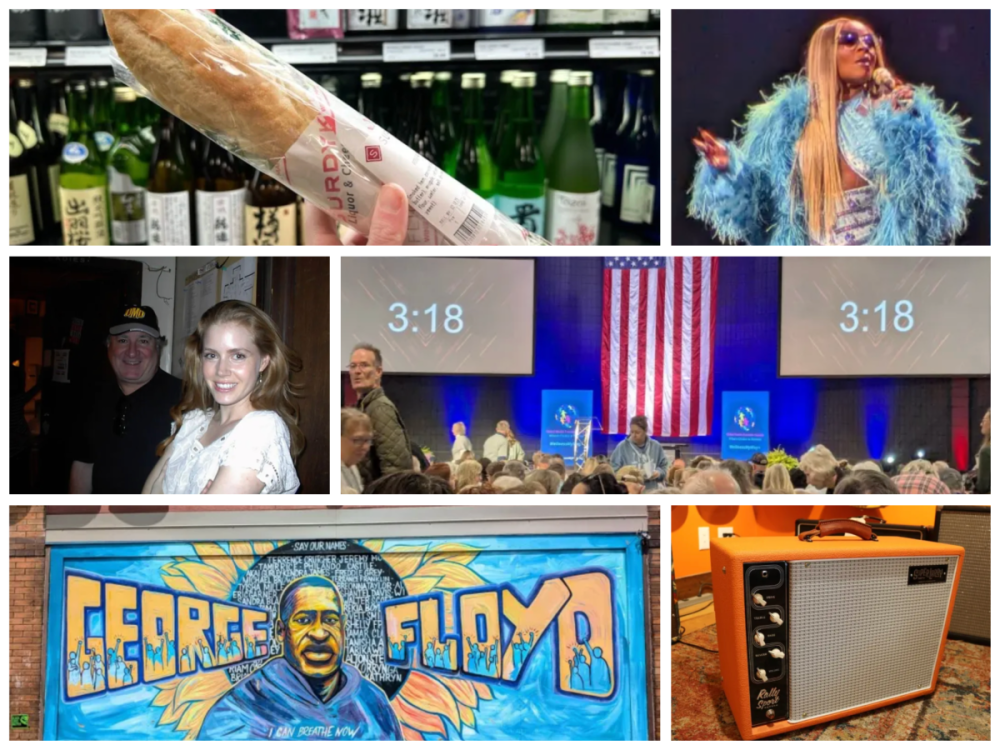Peter Rachleff is professor emeritus of history at Macalester College and co-founder of the East Side Freedom Library.
Local labor activists have organized a series of activities to commemorate major events in local labor history that occurred some 90 years ago. With working people and the labor movement in the midst of a critical and challenging situation today, from the tearing up of collective bargaining agreements covering a million federal employees to the arrests and deportations of hundreds of thousands of hard-working immigrants, you might ask: Why should we turn our attention to the past?
My study of labor history over the past 50 years has taught me that, by placing the past in a conversation with the present, we can craft visions and strategies that will enable us to carve out a path to a better future.
In the first three decades of the 20th century, Minneapolis was regarded as one of the country’s most notorious anti-union cities. The oligarchs of that day—wealthy bankers, businessmen, and their political representatives—developed a powerful organization, the Citizens Alliance, to build upper-class solidarity against the forces which working people had generated in the late 19th century—the Knights of Labor, the American Railway Union, the Industrial Workers of the World, the Socialist Party, the Farmer Labor Party, and a panoply of individual unions. By blacklisting workers who sought to organize unions, using the police and the National Guard to break strikes, and using banks to pressure employers who might agree to bargain with unions, the Citizens Alliance had created a virtually union-free environment in Minneapolis. But their power did not hold.
In the winter of 1934, four and a half years into the Great Depression, a small group of experienced, dedicated labor activists in the city’s coal yards launched a new strategy to revitalize the labor movement. Members Teamsters Local 574, they initiated a strike on February 7 which spread within three hours to 65 of the city’s 67 coal yards. They organized “inside” (warehouse and coal yards) and “outside” (drivers and helpers) workers together in an industrial strategy. They relied on cruising pickets, who shut the entire industry in the midst of a cold snap. Two days later, the coal employers offered the union a settlement and the strike ended. Inspired by this breakthrough, some 3,000 trucking and warehouse workers joined Local 574, which had had only 75 members when they began their strike.
In May, Local 574 called a larger strike, all across the city’s market district. Again, they linked inside and outside workers, ignored the weak mechanisms of the government labor board, and relied on cruising pickets. Activists built an impressive infrastructure—a rented garage as strike headquarters from which mobile pickets could be dispatched; a soup kitchen and an infirmary, fully staffed by volunteers, many from the newly organized women’s auxiliary; a “committee of 100,” mostly stewards from individual shops and warehouses, to make key decisions for the union; a committee of the unemployed, not only to prevent strike-breaking but also to advocate for those without jobs; a weekly newspaper, The Northwest Organizer, to tell their own story directly to the public; and a network of farmers, energized by the Farm Holiday Association and the Farmer Labor Party, to bring food for strikers and their families. The strike lasted 10 days, and, on May 25, employers offered a contract, which union members voted to accept.
The ink had hardly dried on the agreement, however, when employers began to violate its terms. Over 700 complaints of discrimination were logged in June and early July. On July 17, Local 574 renewed its strike. This time, there were more than 10,000 participants, while 35,000 other workers engaged in a sympathy strike. Once again, control over the streets was central to the effectiveness of the strike and, once again, there was violence, even deaths on both sides.
Around 100,000 union members and sympathizers took part in a funeral procession for striker Henry Ness, killed by police in a confrontation which became known as “Bloody Friday” on July 20, 1934. The immense turnout demonstrated that dispatch of the National Guard and the arrests and imprisonment of many union leaders could not bring the strike to an end. With pressure exerted by President Franklin D. Roosevelt and his emissaries, the Citizens’ Alliance finally yielded on August 21, and employers were ordered to hold union elections, almost all of which ended in victories for Local 574 and the negotiation of collective bargaining contracts.
The success of 10,000 truck drivers, helpers, warehouse workers, coal heavers, and other unskilled workers against the forces of the Citizens’ Alliance not only inspired other workers that they too could organize and improve their work lives, but that they were, all of them, together, part of a labor movement which could transform the lives of working men and women, indeed, could transform their city, and, perhaps, more.
The breadth of the movement reflected its depth. Skilled metal workers at Flour City Ornamental Iron, on the one hand, and hosiery workers at Strutwear Knitting, on the other, soon stood up for their rights. Facing local oligarchs who were also leaders in the Citizens Alliance, the workers turned to an industrial organization strategy in which everyone who worked in a facility would have equal status in the same union. As the workers built their new organizations and prepared to strike, they relied on the solidarity offered by the Teamsters, the grassroots organization the Teamsters had built among the unemployed, and the support of their families and neighbors. In the midst of this strategy, they discovered their own capacity and fortitude.
Activities throughout the summer of 2025—ranging from an art exhibit to a bicycle tour, from panel discussions and rousing music to a wreath-laying ceremony—are inviting us to learn about these struggles and from these struggles.
In June 1935, 250 metal workers, organized in International Association of Machinists Local 1313, struck eight foundries and metal shops across the city. The Flour City Ornamental Iron Works, in the Seward neighborhood, became the center of the struggle. Mass pickets, many of them organized by Teamsters Local 574, battled with Minneapolis police and private security who had been brought in from Chicago. On the night of September 11, 1935, two bystanders were shot and killed and 55 picketers were shot or beaten badly enough to require hospitalization. In August, more than 1,000 hosiery workers, women as well as men, organized in Hosiery Workers Local 38, struck the Strutwear Knitting Plant in the heart of the downtown shopping district. In a major conflict, Ray Dunne, a leader of Teamsters 574 was beaten, arrested, and jailed.
Both strikes lasted many months and revealed to working men and women, not only in Minneapolis, but also in St. Paul and across the state, from Hormel’s meatpacking plant to Hibbing’s iron mines, that if they were going to organize successfully, they needed to rely, first and foremost, on themselves and on each other. Solidarity among workers was the most important factor in the success of their struggles.
This summer, activists have created events and programs not just for us to celebrate these historic events (which are, it must be said, too little known in our communities) but for us to consider them, their successes and failures, their strategies and tactics, to weigh them, to chew on them, to imagine what we would have done if we had been there, then, and, at the same time, to ask what, if beamed into 2025, participants in those 1930s struggles would suggest that workers do now.
Such a conversation between the past and the present can help us figure out how to move forward.
Massacre at Flour City Opening Event
With: Q&A feat. the Seward History Committee, talk, opening party, and a concert from Larry Long
When: 11 a.m. to 8 p.m. Sat., July 12
Where: Vine Arts Center, 2637 27th Ave. S., Minneapolis
Tickets: Free; find more info here







